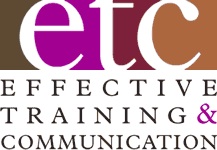How many of you would love to have more winning sales pitches that win more business? How many experience some pain when you pitch business face-to-face, over the phone, in writing or in presentations? Do you ever cause some pain for your prospects or customers as a result of those pitches? Looks like lots of hands going up for all three questions … great! So, read on for 10 Best Practices for winning more business and reducing the pain you feel … and cause … when you pitch business. They’re all simple – just not easy – and they all do work.
1. Realize the difference between your sales process’s goal and and your pitch’s objective. Obviously, your goal is to win the business. But, your objective in the pitch should be to provide the prospects with all the information they said they need or want to help them make a logical, fact-based and fast decision on whether or not to go with you or move you along to the next step in their decision process. So, it’s possible to accomplish your objective, but not your goal. You can make it very easy for them to realize you’re not the best provider for their needs.
#2. Do all your homework in the discovery stage. Make sure you know what the prospect needs, wants, prefers, etc. Ask lots of good questions. Take good notes.
#3. Ask them what specifically they want from you, when they want it and how they want it. Do what they tell you. Under-promise and over-deliver.
#4. Based on that data, make sure you and your organization are appropriately positioned to deliver what they want. If not, no sense wasting their time or yours. If your conclusion is ‘We don’t do that’, consider adding ‘ … but this is what we can do.’
#5. Value their time in your written proposal – make it reader-friendly and easy to follow. Create a concise executive summary in which you indicate the essence of your proposal in the first few paragraphs – especially their investment of time, resources and dollars. Include the proposal components or support data in an easy to follow or skim format.
#6. Ensure the information you share clearly reflects what they said they needed or wanted. Restate their limitations of time, scope or budget you have to operate within to show that you paid attention. Show them that you listened without having to tell them.
#7. Use client-centered language. Don’t confuse or annoy them with your acronyms or buzz terms. Define them first very clearly or use common language that works for you and them.
#8. Stress your value proposition – answer their question ‘Why should I buy from you?’ accurately but enthusiastically. Stress value more than price unless your position is the low price provider.
#9. Ask for the close, or at least for moving on to the next step in their process – which you should have found out about in detail up front.
#10. End your proposal or presentation with a strong, concise and enthusiastic summary of how you’re ideally positioned to provide them with what they need, want … and can afford.
Practicing these simple guidelines will help differentiate you from the competition and reduce the pain you experience and cause. And crafting a world-class customer-centered pitch will greatly improve your chances of accomplishing both your objective for the pitch … and your goal of winning the business.

